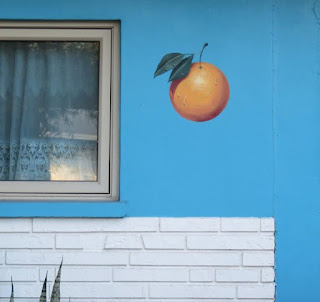(Thank you, Elizabeth Agte. You went on vacation to Florida and posted on fb photographs that inspire this story.)
The small Gulf Coast town of Dunedin, Florida, (population 35,300, 2010 census) sits just west of Tampa and is known for its Scottish roots which it celebrates in the annual Scottish Heritage Festival. More recently, it named itself “America’s Most Walkable City” but I don’t know how that was measured and against whom. Some might argue that 35,000 souls do not a city make!
Never mind.
Dunedin has a few other bragging points aside from the mere fact that it’s in the Sun Belt and has water access. It’s the spring training grounds for the Toronto Blue Jays. It sits alongside the Orange Belt Railway. Built by a Russian immigrant in 1885, it was one of the first small gauge rail lines in the U.S. (a mere 3 feet wide) that ran from Sanford to St. Petersburg, a distance of 152 miles. The train line is no longer active but approx. 35 miles of the old bed now form a hiking/biking trail accessible to Dunedinians and visitors as part of the national “rail to trails” program.
Over the years, the town center miraculously resisted any attempt to “update” its commercial district. No large commercial signs are allowed nor corporate franchise restaurants nor franchise retail stores. The result is an authentic town (usually labeled “quaint”), not the homogenized versions that plague our country from coast to coast. It also means that local commerce must be creative to keep “in the game.”
In 2009, two local residents - artists Steven Spathelf, age 52, and Marsha Goins, age 46, (Marsha also happened to own the Enchanted Branch, a flower/gift shop) decided that art could 1)distinguish the central commercial district, 2)provide unique promotion opportunity and 3)instill pride of place. They picked oranges (no pun intended) as the shared symbol of their town, pre-scouted the area for smooth walls, invested $150 in paint and at 5 a.m., April 13, 2009, set about the business of painting foot high oranges on business walls. They planned to finish by 8 a.m., clean up and disappear from the scene without getting caught.
Obviously, that didn’t work. They were spotted by people coming to work. They were hugged, chatted with, laughed with and hugged again. No charges of violation were filled. Building owners that failed to get an orange? See the sign posted by the Chamber of Commerce .
(Just reported: there are now over 350 "oranges" in Dunedin along with an orange parade.)
(Just reported: there are now over 350 "oranges" in Dunedin along with an orange parade.)
(Photographs: Elizabeth Agte and the Tampa News)









